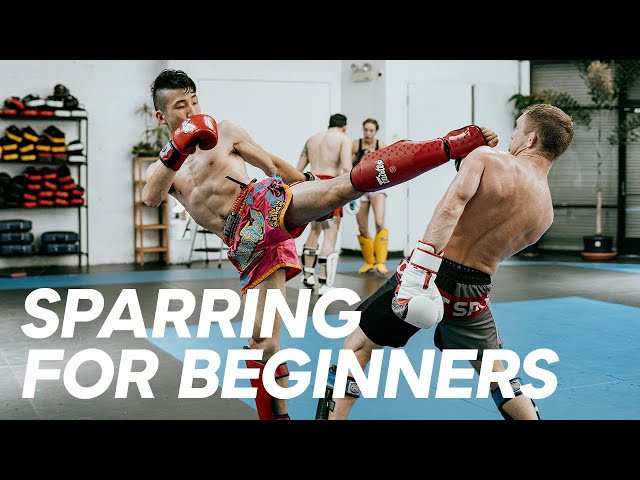Muay Thai

Like any martial art, Muay Thai will teach you how to defend yourself. Unlike jiu-jitsu, Muay Thai focuses on striking rather than ground fighting, which makes it an excellent complement to someone who is training jiu-jitsu but wants to be a more well-rounded fighter.
Though training jiu-jitsu will prepare you for the rigors of learning any martial art, it never hurts to have a good idea about what the environment will be like should you take a Muay Thai course. As Alby Tam of Combat Culture, a Muay Thai gym in San Francisco, explains in the below video, there are a few things everyone should know or do before taking their first class.
Talk with Your Coach
Talking with your coach is vital before you begin. In addition to keeping yourself safe, you also need to be comfortable enough with the idea of sparring to keep others safe. If you are not accustomed to physical combat, it can be difficult to control your temper when you are sparring, and this can lead to escalations of aggression that could have been avoided with more training.
Let your coach know why you want to start taking Muay Thai classes, what your goals are, and your skill level. These can help your coach assess your situation and steer you in the right direction.
Go to the Right Class
Once you’ve talked with your coach, make sure to go to the right class. Going to a “fighter’s only” class on your first day is not going to be much fun, even if you’ve trained in other types of martial arts.
Get the Right Gear
You should bring items that you would normally bring to a gym before working out. This includes water, a towel, a change of clothes, and a backpack to store everything during class. Since footwear is not allowed on the mat, you may want to bring flip flops or sandals that you can easily slide on and off should you need to use the restroom during class.
For equipment, you’ll want a pair of 16 oz gloves, something to wrap your hands with, a mouthguard, and shin guards. Elbow pads, knee pads, and ankle guards are optional, but they might be a good idea once you start sparring with more intensity. Headgear may or may not be required.
Most beginner equipment is affordable and can readily be purchased online. Gyms may also sell equipment. If you are on a budget, some gyms may have loaner equipment like hand wraps, shin guards, and gloves. If you need a cup, you’re probably not going to get a loaner, so make sure to buy one before coming to class.
Communicate Verbally
As far as general etiquette goes when you’re sparring, make sure to communicate with your training partner. Don’t leave them guessing about your level of experience or comfort. If it’s your first day doing any kind of martial art, let them know. If you used to take boxing classes, let them know. If you’re a black belt in karate, let them know.
Another important item is to let them know if you have any injuries. If your right knee is not 100%, let them know before you start sparring.
Communicate with Gloves
Another way of communicating is with your gloves. Most people bump gloves to indicate they’re ready to start sparring or when the round is over. Some people may also bump gloves if their partner landed a good shot or after a good exchange.
Back Off When Needed
Another nonverbal means of communication is when you back off. If someone landed a good shot, you’re not feeling 100%, or you need to adjust your equipment, just put up your hands and take a step back. This is not a competition. You’re just training. There’s nothing wrong with taking a moment to catch your breath.
Don’t Go at 100%
To continue with this train of thought, sparring is a form of training—it is not the same as a competition. While you should be trying to challenge your partner and put up a good fight, the goal is not to knock them out.
Moves to Avoid
Teeps (push kicks) to the face and the knee are not a good idea. Similarly, don’t put all your strength into moves that can seriously hurt someone, including elbows to the face, knees to the body, and hard sweeps and dumps. As Alby notes, you can be competitive, but don’t be malicious.
Train Differently with Different Experience Levels
If you are training with someone who is not as experienced as you, use that opportunity to work on parts of your game that are not as strong as they could be. If your partner is very active, focus on your counters. If they are more conservative, focus on your offense.
If you are training with someone who is more experienced than you, take that as an opportunity to work on your defense and to study what they’re doing. You can also ask for pointers. After all, sparring is a learning experience and we’re all out there to become better.
Finally, always remember to be courteous and considerate to others who are at the gym. When you show people respect, they’ll show you respect.

